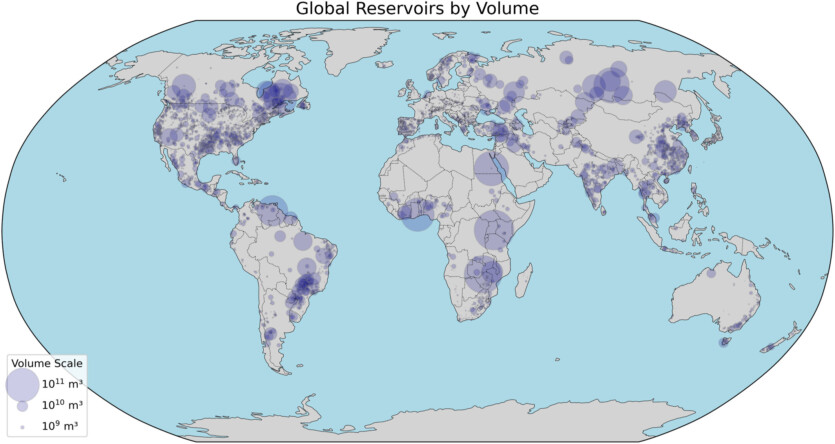
A new study conducted by Harvard researchers has shown that thousands of dams built over the past few decades have failed, shifted the Earth’s poles for more than 1 km.
The study points out that over the past 200 years, humanity has built about 7,000 large dams, accumulating enough water to move the planet’s poles by about 1 meter and cause a 21-millimeter drop in global sea levels. The Earth’s solid crust forms a shell around a hot layer of viscous magma. Each time a significant amount of mass is redistributed across the surface, the outer layer of rock experiences fluctuations, shifting relative to of the Earth’s interior. In this case, different regions of the Earth are directly above the planet’s rotation axis. As a result, the poles of the planet pass through different points on the surface than before.
«When we retain water with dams, it not only removes water from the oceans, which leads to a global drop in sea levels, but also redistributes mass around the world», — explains the lead author of the study, Natasha Valensich from Harvard University.
In a new study Valensic and her colleagues analyzed a previously published database of dams around the world. They sought to determine their location, the amount of water stored, and how this water affected the Earth’s mass distribution.

Previously, data from the database showed that dams built between 1835 and 2011 contributed to sea level rise Together, these dams hold enough water to fill the Grand Canyon twice.
The first stage of pole shift due to large-scale dam construction took place between 1835 and 1954. At that time, a large number of dams were built in the United States and Europe These regions have shifted to the equator, resulting in North Pole has shifted by about 25 centimeters toward the 103rd meridian to the east, a line that runs through Russia, Mongolia and China.
The second wave of dam construction lasted from 1954 to 2011, mainly in Asia and East Africa. As a result The North Pole has shifted by 57 centimeters to the 117th meridian of western longitude, passing through the western part of South America and the South Pacific.
The results of the study emphasize the need to take into account the volume of water accumulated by dams when predicting further sea level rise In the twentieth century, the level of the world’s oceans rose by 12-17 centimeters, but, according to Valensich, about a quarter of this volume was retained by dams
The results of the study are published in the journal Geophysical Research Letters
Source: Gizmodo

Spelling error report
The following text will be sent to our editors: